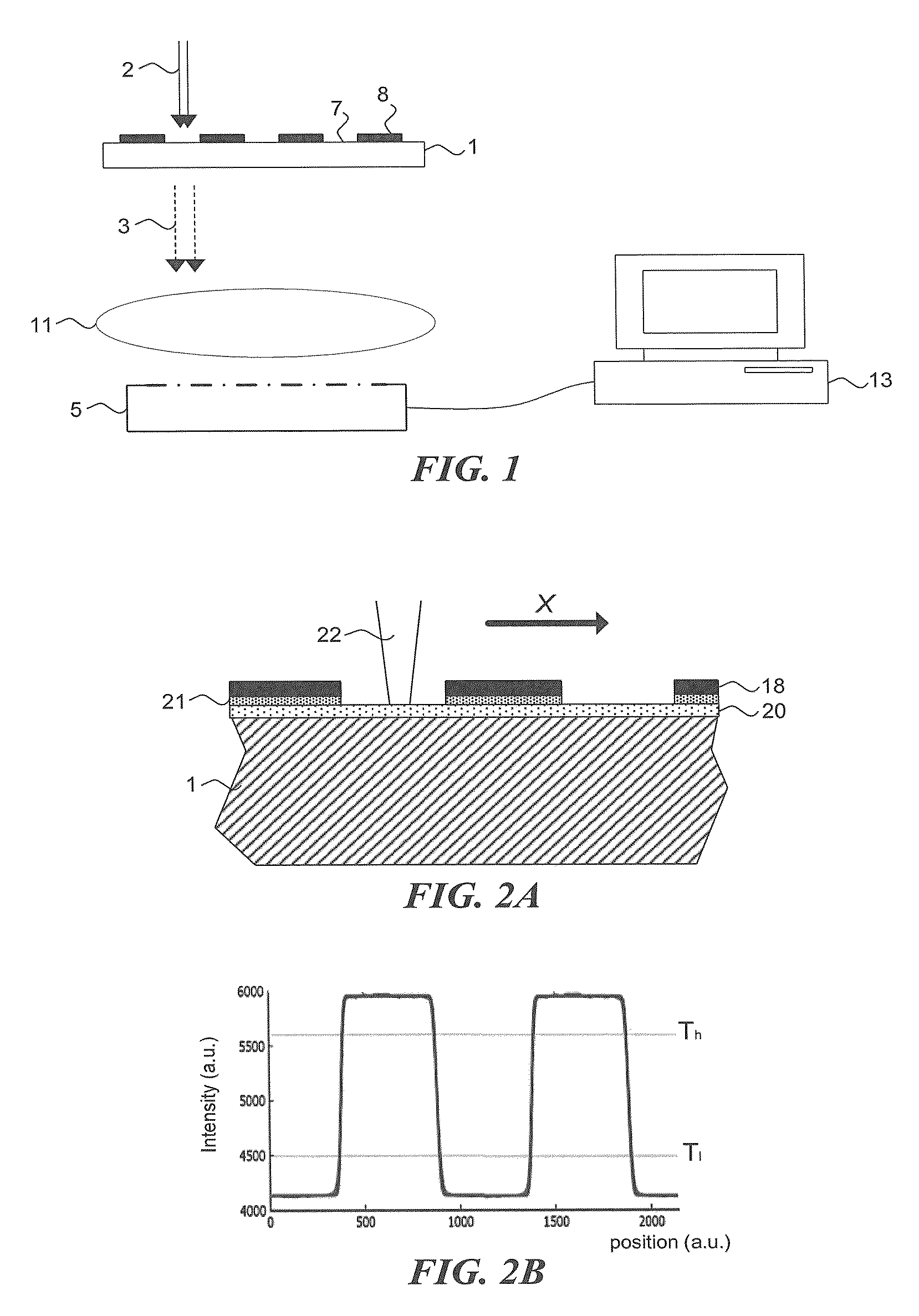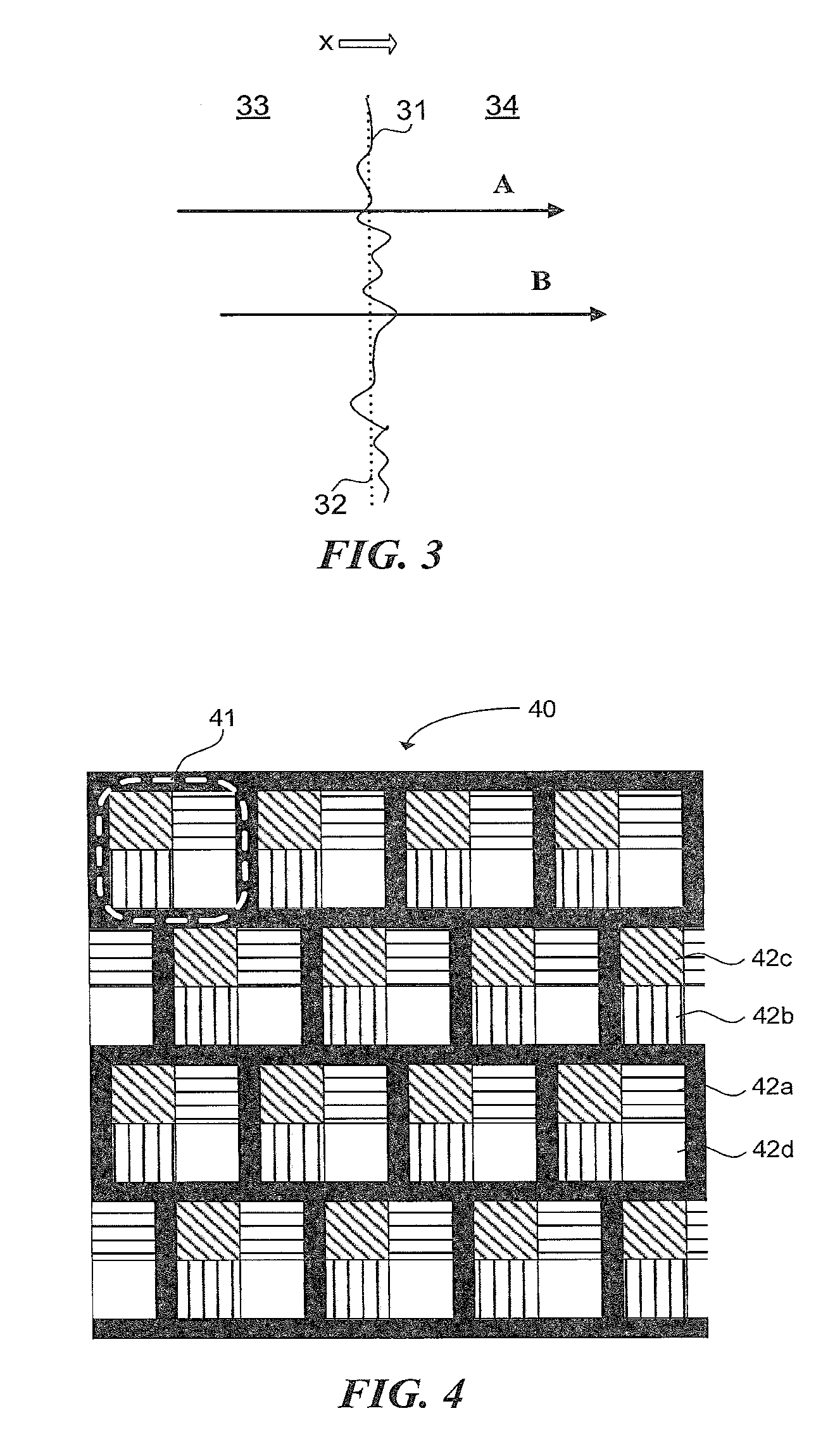Method for determining a distance between two beamlets in a multi-beamlet exposure apparatus
- Summary
- Abstract
- Description
- Claims
- Application Information
AI Technical Summary
Benefits of technology
Problems solved by technology
Method used
Image
Examples
Embodiment Construction
[0031]The following is a description of certain embodiments of the invention, given by way of example only and with reference to the drawings.
[0032]FIG. 1 schematically shows the operation of a sensor for determining a beam position of charged particle beamlets. The sensor comprises a converter element 1 and a light receptor 5. The converter element is provided with a pattern comprising charged particle blocking regions 8 and charged particle transmissive regions 7, further referred to as non-blocking regions. The converter element 1 is arranged for receiving charged particles 2 and generating photons in response, further referred to as light 3. The light 3 may be directed towards the photon receptor 5 by means of an optical system 11. The photon receptor 5 is communicatively coupled to a calculation unit, e.g. a computer 13 for determining the beam position of charged particles 2.
[0033]The converter element 1 may take the form of a fluorescent element, for example a fluorescent scr...
PUM
 Login to View More
Login to View More Abstract
Description
Claims
Application Information
 Login to View More
Login to View More - R&D
- Intellectual Property
- Life Sciences
- Materials
- Tech Scout
- Unparalleled Data Quality
- Higher Quality Content
- 60% Fewer Hallucinations
Browse by: Latest US Patents, China's latest patents, Technical Efficacy Thesaurus, Application Domain, Technology Topic, Popular Technical Reports.
© 2025 PatSnap. All rights reserved.Legal|Privacy policy|Modern Slavery Act Transparency Statement|Sitemap|About US| Contact US: help@patsnap.com



